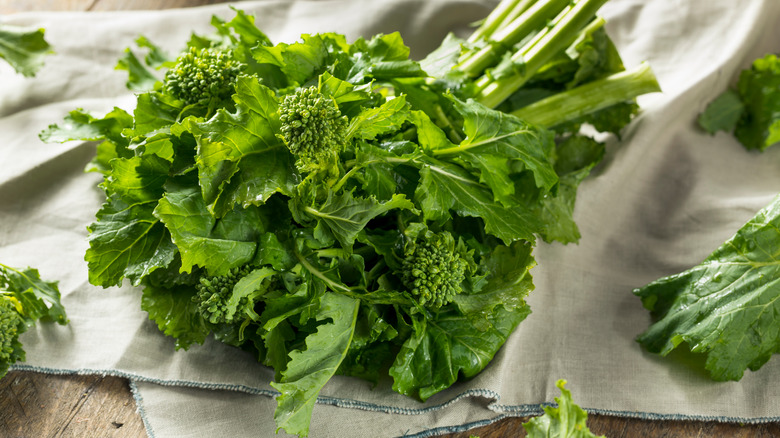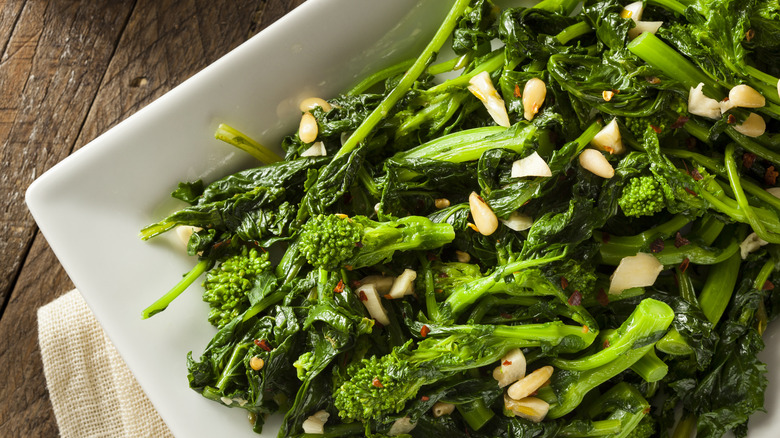The Science Behind Why Broccoli Rabe Is So Bitter (And How To Remedy It)
You're likely familiar with broccoli and broccolini, but if you haven't tried their more potent cousin, broccoli rabe, you're missing out. This slender, leafy green is regarded as a powerhouse ingredient not just for its many nutrients, but its robust flavor, too. Broccoli rabe, aka rapini, has an undeniably bitter taste. However, understanding why the cruciferous veggie has this particular flavor profile can help you minimize its often overpowering kick in the kitchen.
Whether you're tossing broccoli rabe into a honey walnut shrimp bowl or serving it as a side to some herby lemon butter fish, the ingredient will make its presence known. It might be hard to snack on this veggie the way you'd snack on leftover broccoli stalks, as its bold, biting quality is due to its own genetic makeup. Its florets contain two enzymes, myrosinase and glucosinolate. When you chew or cut into the veggie, the cells become damaged and cause these enzymes to combine, resulting in an even more jarring compound called isothiocyanates. You can thank these sulfur-containing molecules for its uniquely potent sharpness. However, if broccoli rabe's harsher qualities just aren't for you, there are a few methods that can take the vegetable's bitterness down a notch.
How to reduce the bitterness of broccoli rabe
The first route you can take to reduce the bitterness of broccoli rabe is roasting it. Rather than needing to go in with sugar, this cooking method takes care of it for you. It brings out the natural sugars in vegetables, enhancing their sweetness. Plus, it'll give your food a pleasantly crispy texture. An alternative approach to roasting would be to blanch your broccoli rabe. This technique is especially ideal for those who plan to eat the veggie perhaps as a side or all on its own for a snack. Briefly boiling the ingredient deactivates some of those bitter-tasting enzymes and prevents them from combining and becoming even harsher. You can then sauté the veggies with sweet, salty, or acidic flavors to further balance the bitterness. For example, garlic, olive oil, red pepper flakes, and lemon juice are solid options. You could also opt for ingredients like onions, black pepper, and even some Romano cheese.
Another tip, which America's Test Kitchen arrived at through trial and error, is to be mindful of the way in which you cut up the rapini. The more you damage its cells by chopping it into fine pieces, especially its leaves where the enzymes are concentrated, the more its bitter taste will be released. So, when possible, keep broccoli rabe in larger pieces and avoid hacking up the florets. It's a small action that can make a big difference in toning down your veggies' overwhelming flavor.

